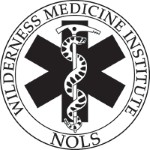Emergency Etiquette: Minding Your Safety Ps and Qs
Be prepared
Post emergency telephone numbers for your area on or by each phone. Businesses should include the location (Street address and/or floor and suite #, as well as any special dialing prefixes.) Show your children where the numbers are located and teach them how to make emergency calls. Make sure your business or house numbers are at least four inches tall and are clear and visible from the street.
If you need emergency services at night, turn on your outside lights to help EMS responders find your location. If possible, have someone direct EMS personnel to where they are needed.
Know how to spot an emergency
- If you think someone could suffer significant harm or die unless prompt care is received, that situation is an emergency
- Someone who has fallen and can’t get up
- Someone experiencing chest pain lasting two minutes or more
- Uncontrolled bleeding or a fracture
- A traffic accident
- Debris along the roadway, skid- marks, or other clues there has been an accident
Know how to contact your local emergency services
Dial 9-1-1 to connect to emergency dispatchers for medical, fire, or police help. (Note: not all areas have 9-1-1. In those areas, there are different numbers to call for medical, police, or fire emergency. Find out what those numbers are and P.L.A.N.—Post Lists of All Emergency Numbers on or by each telephone in your home.)
Give name, address, phone number, location of the victim (such as upstairs bedroom), and nature of the problem.
Be prepared to tell what has happened, where it has happened, and your phone number.
When the dispatcher answers the call, answer all of his or her questions as best you can.
Stay on the line until the dispatcher instructs you to hang up.
Waiting for help to arrive—quick first aid
Do not move the victim unless his or her location poses an immediate threat, e.g. victim is in water, a fire is burning in the building or vehicle, or there is no way to protect the victim from harm in his or her current location.
Do not give the victim anything to eat or drink.
Protect victim from the environment by keeping him or her covered.
If victim is bleeding, apply a clean cloth or sterile bandage. If bleeding continues, apply additional dressings over the existing bandage. If possible, elevate the injury and apply direct pressure to the wound.
If the victim is not breathing or does not have a pulse, begin rescue breathing or CPR
When help arrives
Stand to the side of the road, well out of the way of ambulances and other emergency vehicles.
Answer EMS personnel questions promptly and clearly.
If you know the victim, provide EMS personnel with any pertinent medical information, e.g., diabetic, allergies, pacemaker, etc.
If you accompany the victim to the ED, try and answer staff questions completely.
What to expect in the ED
In the ED, the most seriously ill or injured patients are treated first.
A triage nurse will check the victim’s vital signs - temperature, heart rate, blood pressure, and breathing. The nurse also will ask questions concerning the victim’s symptoms and the name of his or her regular physician.
Unless the victim requires treatment right away, the triage nurse will direct you to a registration area where the victim will he asked to give name, age, address, and the name of his or her health insurance company.
If the victim’s condition is not life- or limb-threatening, he or she may be asked to wait; if the victim’s condition worsens while waiting, let the triage nurse know.
Tips to help you respond more effectively in an emergency situation
Do not move anyone who has been involved in a car accident, serious fall, or is found unconscious unless he or she is in immediate danger of further injury... movement could cause additional injury.
Learn the warning signs for heat- and cold-related problems, and those for strokes and heart attacks. Get help fast when those warning signs are seen.
If there has been an accident resulting in vehicle fire, get yourself and others out of the way of the vehicle immediately; call EMS; remain away from the vehicle (do not attempt to retrieve personal possessions); never put yourself in danger using a fire extinguisher; and do not open the hood or trunk if you suspect a fire, as air could rush in, enlarging the fire and leading to injury.
Do not use ice, butter, or petroleum jelly on burn injuries. For minor burns without blisters, place the burned area into cold water until the pain is gone. Bums with blisters need a doctor’s attention, and for large or deep burns, an immediate call to EMS is needed.

